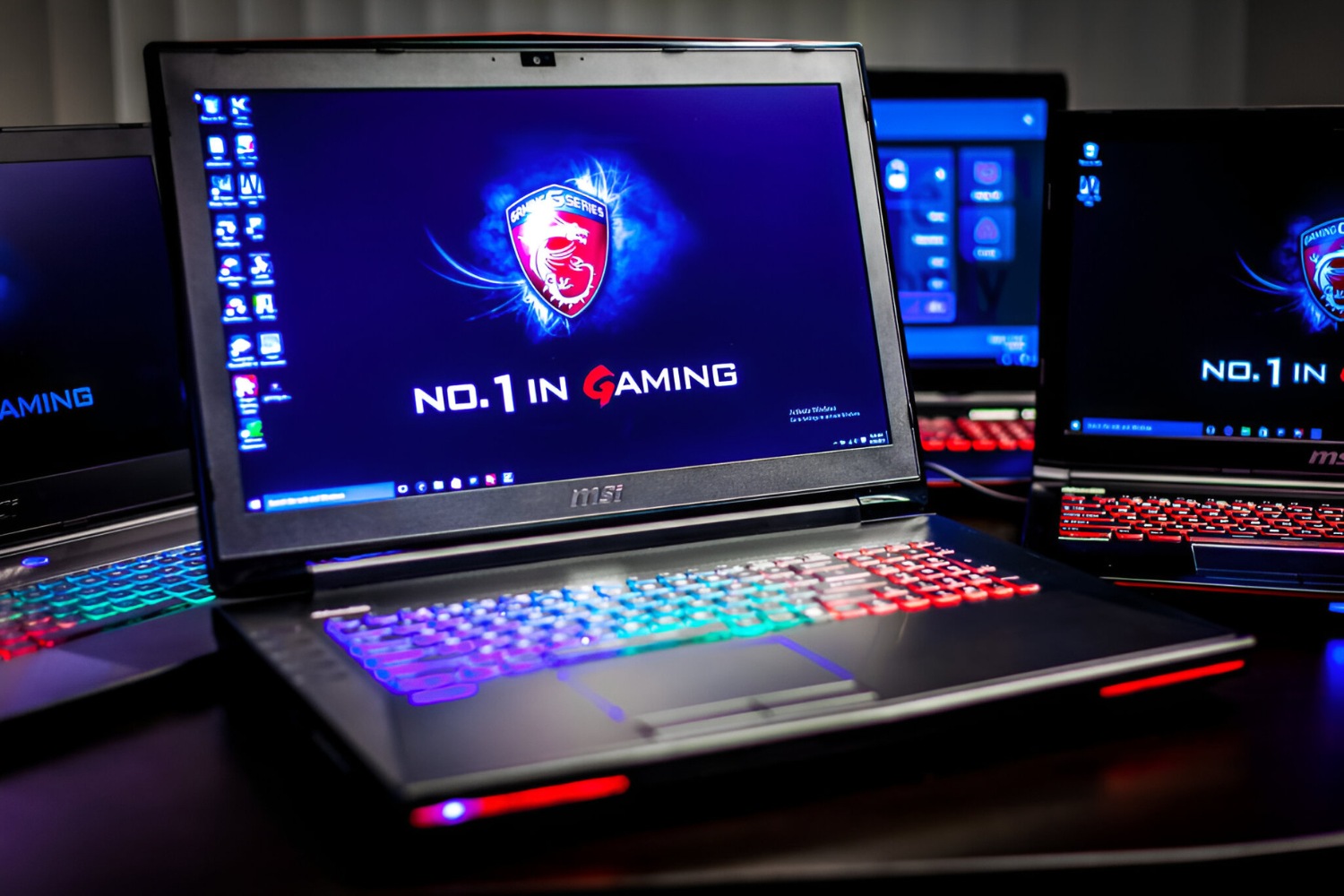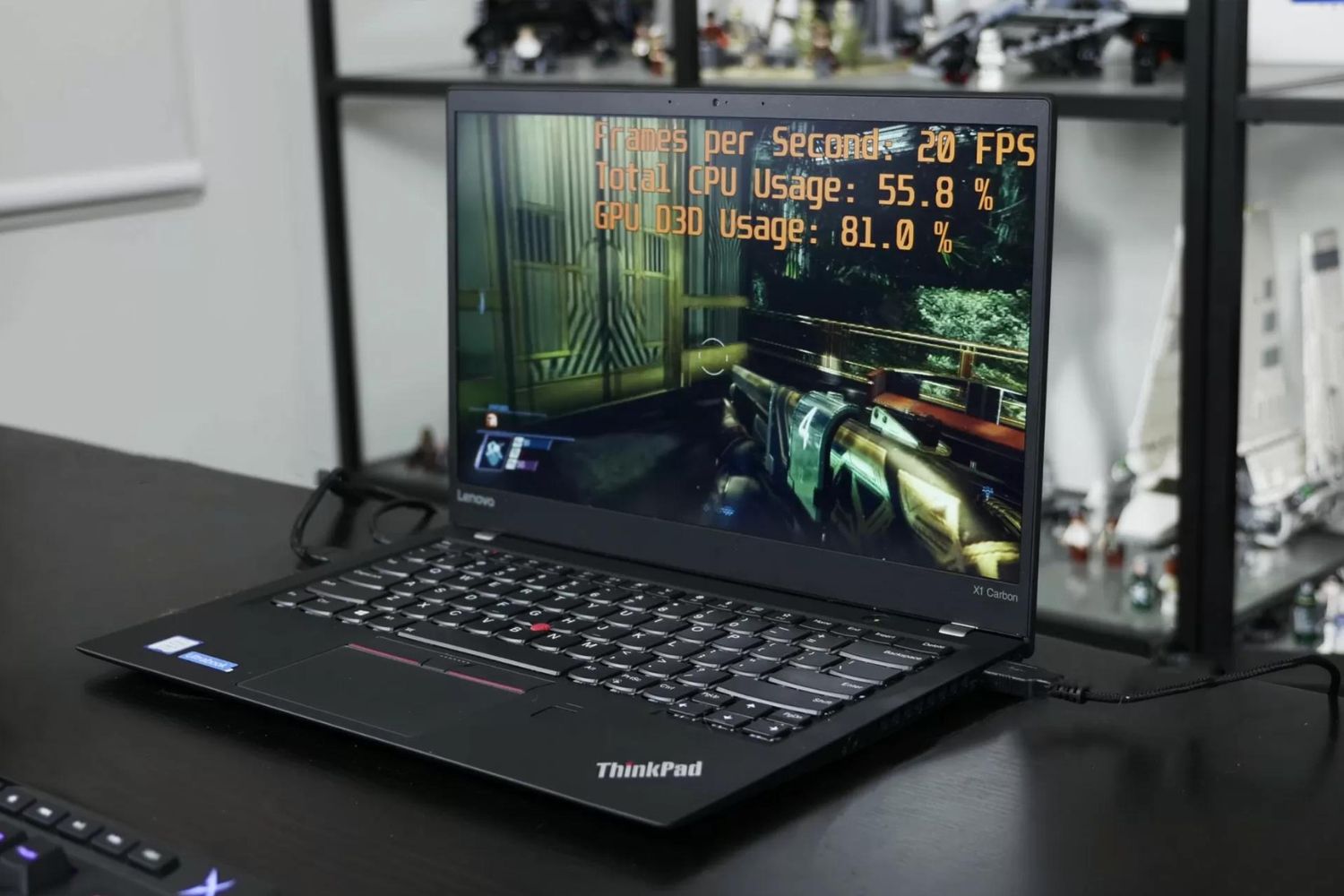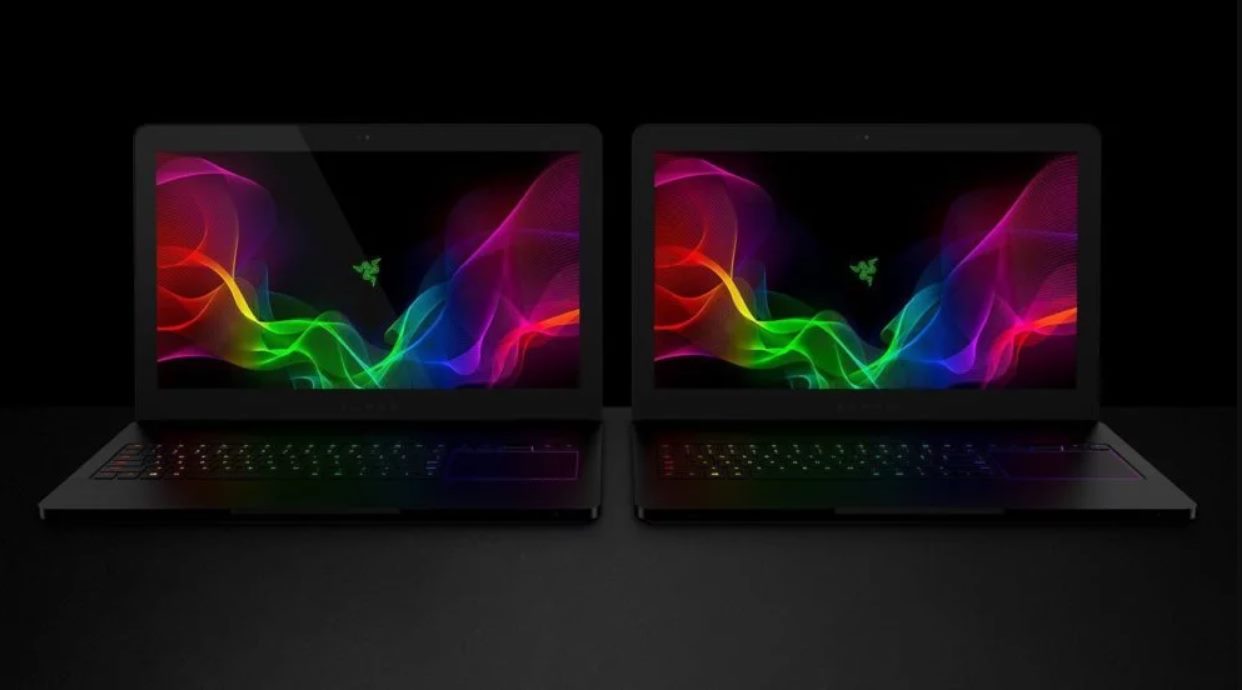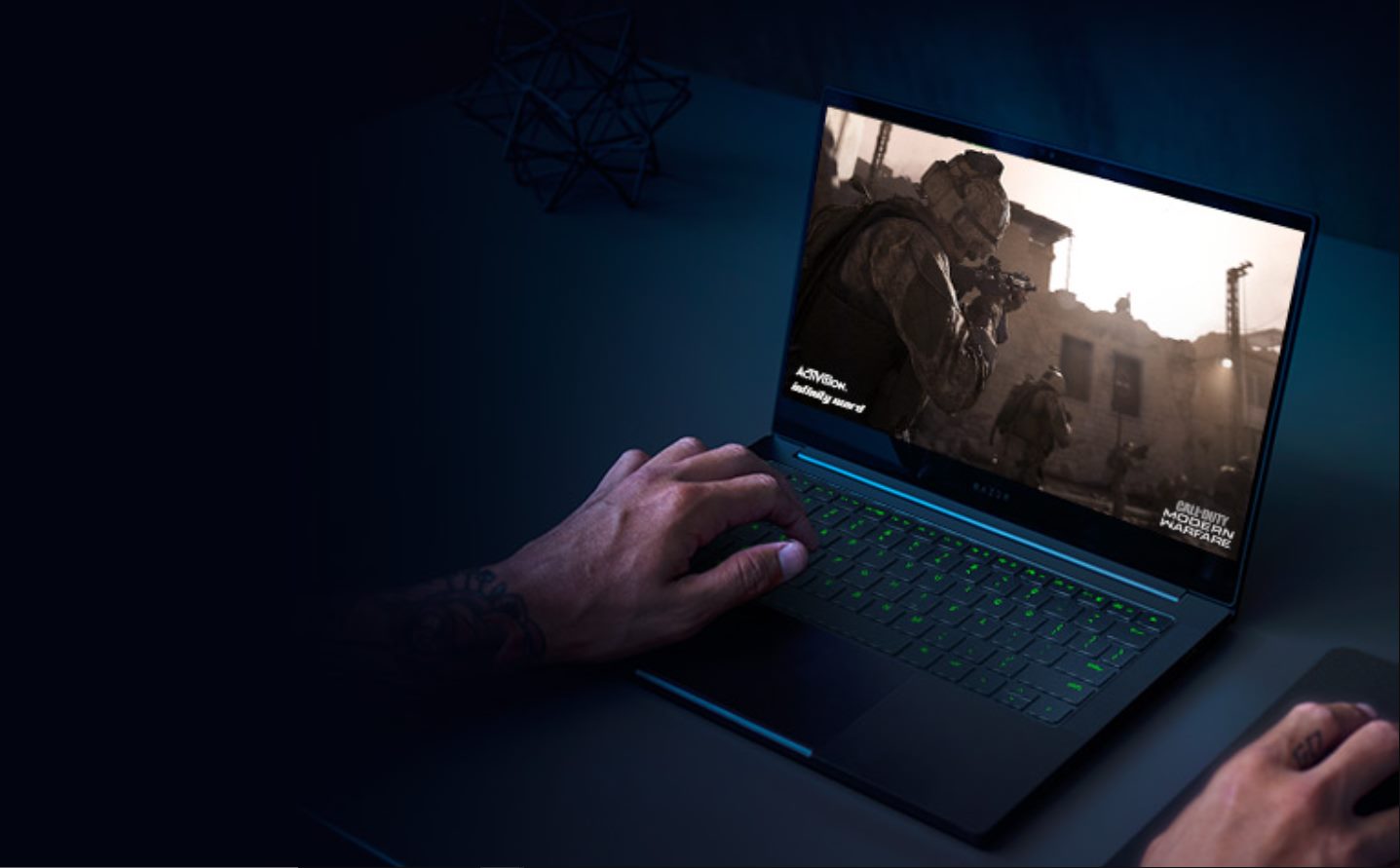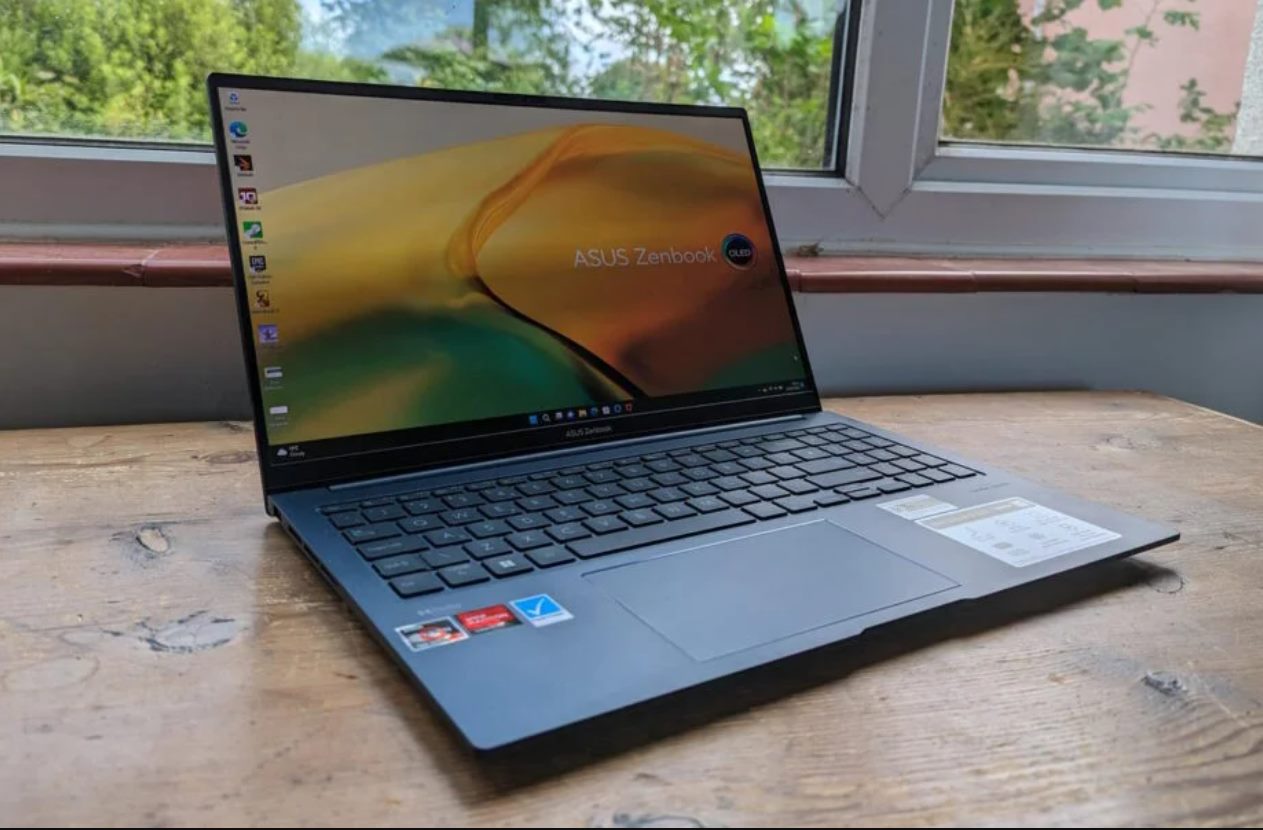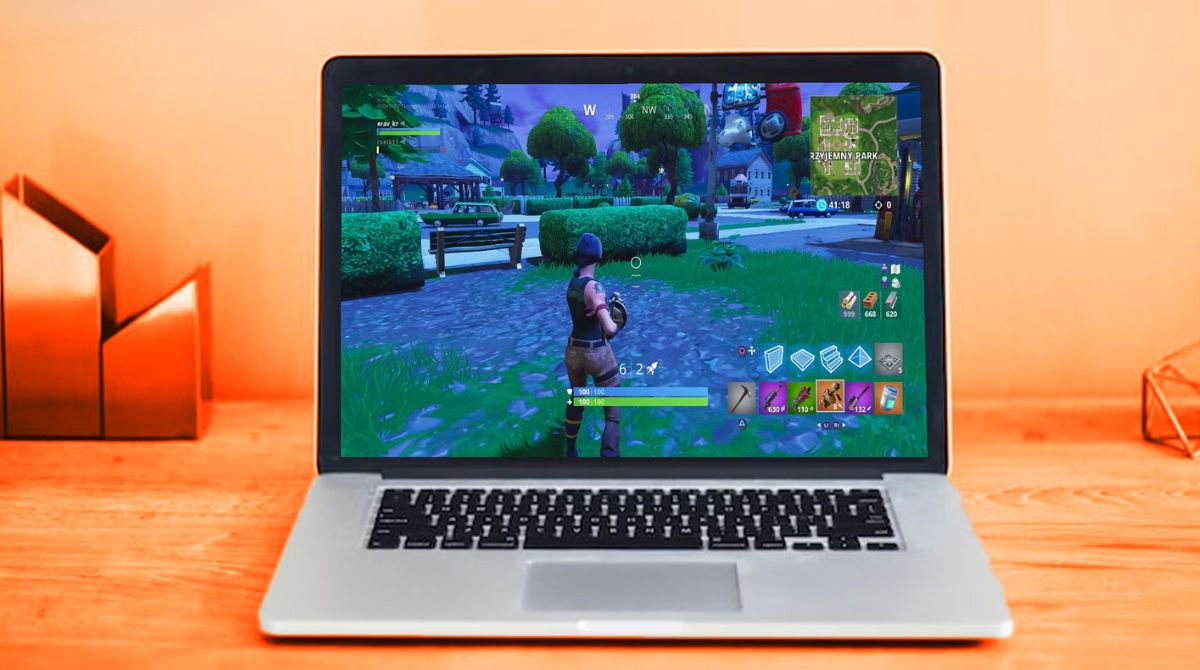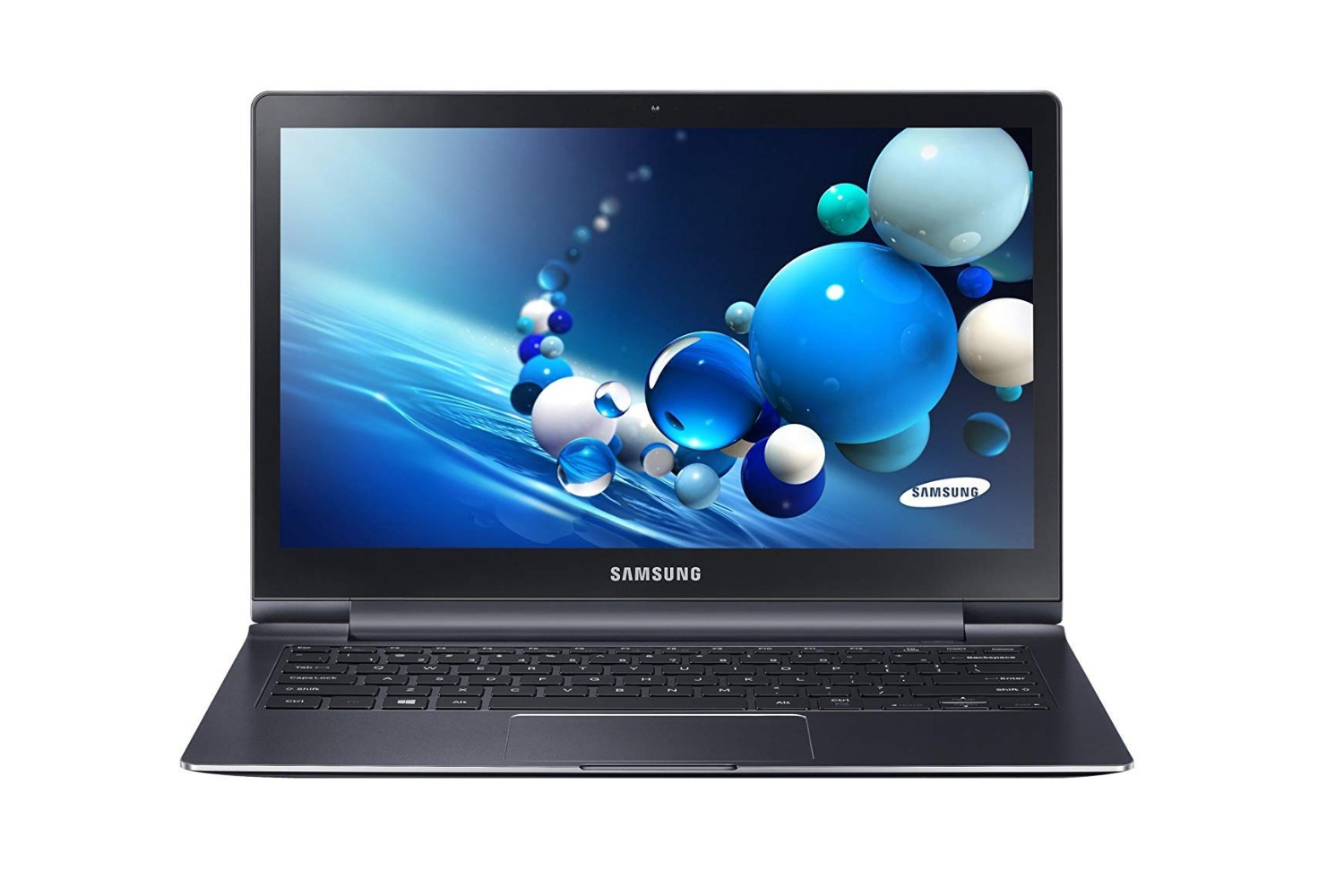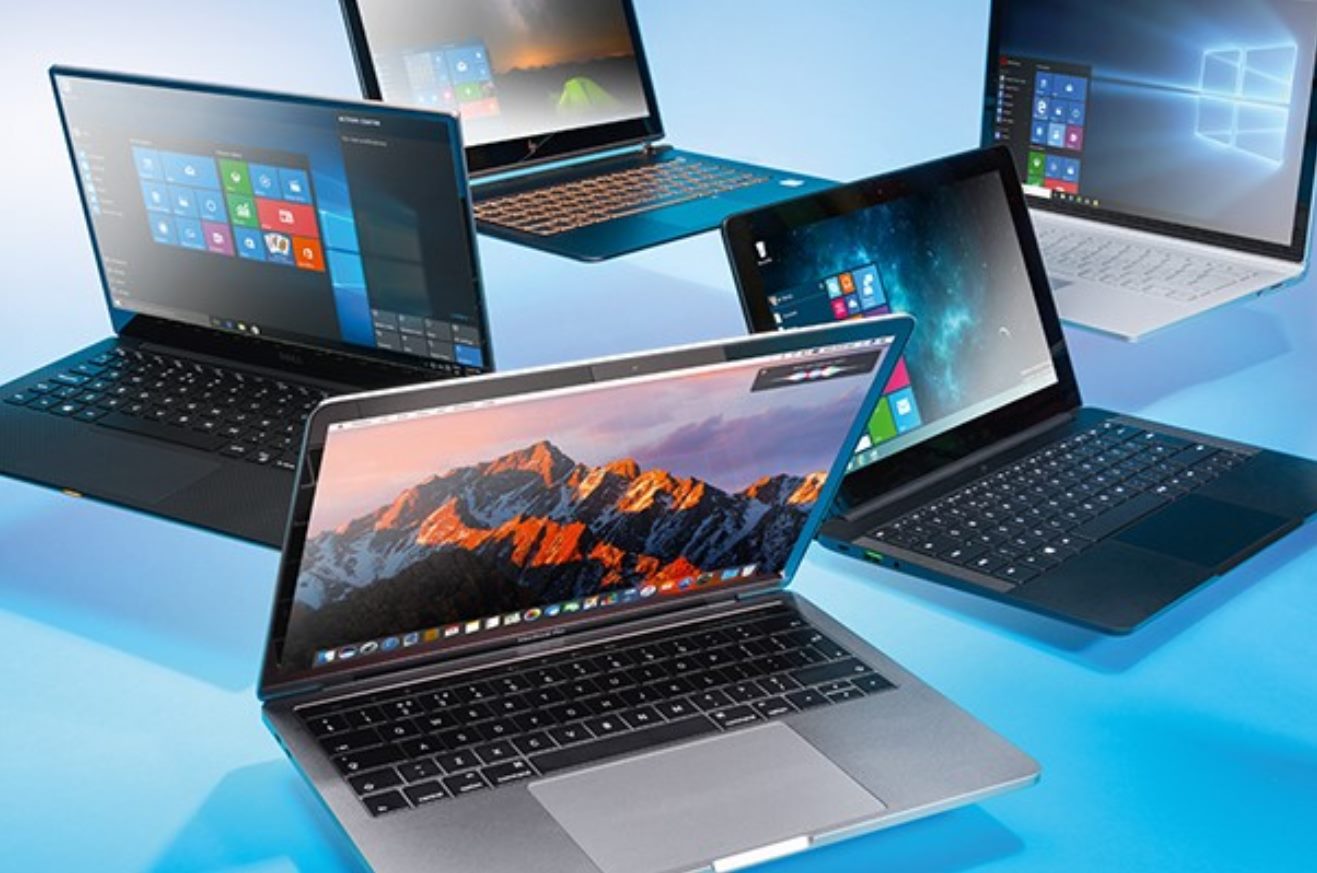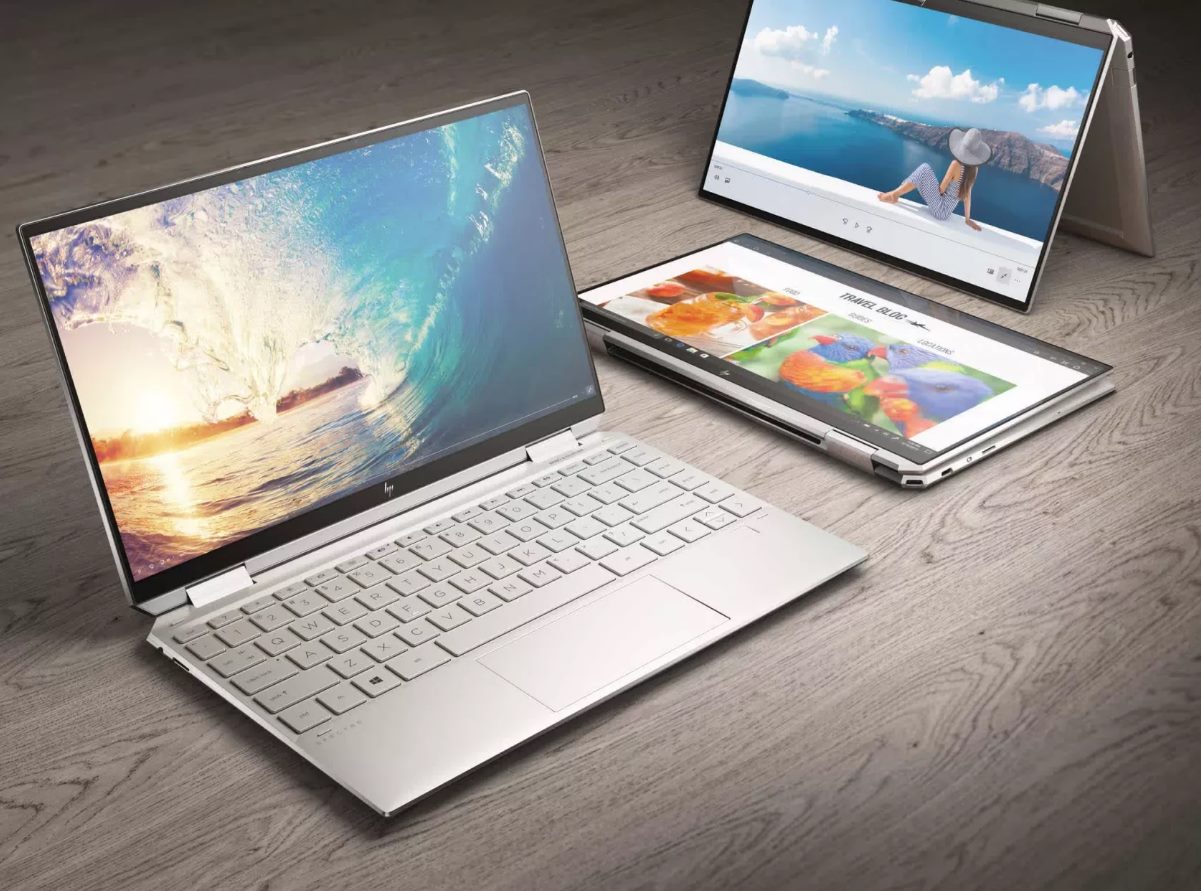Checking the System Requirements
Before diving into gaming on your ultrabook, it’s essential to ensure that your system meets the minimum requirements for the games you want to play. Here are a few steps to help you check if your ultrabook can handle the gaming performance you desire.
- Check the Processor: The processor is the heart of your ultrabook’s performance. Look for a quad-core Intel i5 or i7 processor to handle demanding games smoothly. The higher the clock speed, the better.
- Inspect the RAM: Games require a significant amount of memory, so make sure your ultrabook has at least 8GB of RAM. This will ensure smooth gameplay and prevent lagging issues.
- Examine the Graphics Card: Integrated graphics might not be sufficient for gaming. Look for a dedicated graphics card such as NVIDIA GeForce or AMD Radeon with a minimum of 2GB VRAM for a better gaming experience.
- Storage Space: Games these days require a substantial amount of storage. Ensure that your ultrabook has enough internal storage or consider investing in an external hard drive to store your games.
- Screen Size and Resolution: A larger screen size and higher resolution can enhance your gaming experience. Look for ultrabooks with a 14-inch or larger display and a resolution of 1080p or higher.
- Peripherals: Check if your ultrabook has the necessary ports for connecting external devices like a gaming headset, mouse, or gamepad. Some ultrabooks may require adapters to connect certain peripherals.
By thoroughly checking the system requirements, you can ensure that your ultrabook is capable of delivering the gaming performance you desire. If your current ultrabook falls short, consider upgrading certain components or investing in a new gaming ultrabook altogether.
Updating Graphics Drivers
One of the most crucial factors in optimizing gaming performance on your ultrabook is keeping your graphics drivers up to date. Graphics drivers are responsible for translating instructions from the game into actions on your screen. Outdated drivers can lead to performance issues, graphical glitches, and even game crashes. Here’s how you can update your graphics drivers:
- Identify your graphics card: Determine the brand and model of your graphics card. You can usually find this information in the device manager or by checking the manufacturer’s website.
- Visit the manufacturer’s website: Go to the website of your graphics card manufacturer, such as Nvidia or AMD.
- Download the latest drivers: Look for the section dedicated to driver downloads on the manufacturer’s website. Locate the appropriate drivers for your graphics card model and download them to your ultrabook.
- Install the drivers: Once the drivers are downloaded, run the installation executable and follow the on-screen instructions. It’s recommended to choose a clean installation option to ensure a smooth and error-free update.
- Restart your ultrabook: After the installation is complete, restart your ultrabook to apply the changes and activate the updated graphics drivers.
Regularly updating your graphics drivers ensures that your ultrabook is equipped with the latest optimizations and bug fixes for gaming performance. It can significantly enhance the visual quality, stability, and overall responsiveness of your games.
If you prefer a more streamlined approach to driver updates, you can also consider using third-party software designed to automatically detect and install the latest graphics drivers. These tools can simplify the process and ensure that you stay up to date with the latest driver releases.
Optimizing Graphics Settings
When it comes to gaming on an ultrabook, optimizing the graphics settings can make a significant difference in both performance and visual quality. By tweaking the graphics settings to match the capabilities of your ultrabook, you can achieve smooth gameplay without sacrificing aesthetics. Here are some tips for optimizing your graphics settings:
- Adjust resolution: Lowering the resolution can have a significant impact on performance. Experiment with different resolutions to find a balance between visuals and performance that suits your preferences.
- Manage anti-aliasing: Anti-aliasing smooths out jagged edges in games but can be demanding on system resources. Consider adjusting the level of anti-aliasing or disabling it if needed.
- Texture quality: Lowering texture quality can free up memory and improve overall performance. Experiment with different texture settings to find the right balance between performance and visual fidelity.
- Shadow and lighting effects: Shadows and lighting effects can significantly impact performance. Consider reducing the quality or disabling certain effects to improve frame rates.
- Disable or lower post-processing effects: Effects such as motion blur, depth of field, and ambient occlusion can be visually stunning but can also put a strain on your ultrabook’s resources. Experiment with reducing or disabling these effects for better performance.
- Monitor refresh rate: If your ultrabook has a higher refresh rate display, make sure to maximize the game’s frame rate to take full advantage of the smoother gameplay experience.
It’s important to note that every game may have different in-game graphics settings options. Take the time to explore the settings menu of each game and adjust them to find the perfect balance between performance and visual quality for your ultrabook.
Additionally, keep an eye out for game-specific optimization guides or forums where players with similar ultrabooks share their settings and tweaks for optimal performance. These resources can provide valuable insights to help you fine-tune your graphics settings to achieve the best gaming experience on your ultrabook.
Closing Unnecessary Background Processes
When gaming on your ultrabook, it’s important to allocate as much system resources as possible to the game itself. Unnecessary background processes running on your ultrabook can consume valuable CPU and memory, impacting gaming performance. By closing these processes, you can ensure that your ultrabook is solely focused on delivering optimal gaming performance. Here’s how:
- Task Manager: Open the Task Manager by pressing Ctrl+Shift+Esc or right-clicking the taskbar and selecting Task Manager. Here, you can see a list of all running processes and their resource usage.
- Identify unnecessary processes: Look for processes that are not essential for gaming, such as software updaters, background utilities, or applications consuming significant CPU or memory resources.
- Close processes: To close a process, select it from the list and click on the “End Task” button. Exercise caution and avoid closing critical system processes.
- Disable startup programs: Some applications automatically start with your ultrabook and run in the background. Disable non-essential programs from starting up by opening the Task Manager’s “Startup” tab and disabling those you don’t need.
- Optimize system performance: Consider using system optimization tools that can identify and disable unnecessary background processes automatically. These tools can help streamline your gaming experience without the hassle of manual intervention.
By closing unnecessary background processes, you can free up system resources, reduce CPU and memory usage, and improve gaming performance on your ultrabook. Remember to restart your ultrabook after closing processes to ensure the changes take effect.
If you’re unsure about closing a particular process or its impact on your ultrabook’s functionality, it’s always recommended to research the process online or consult with knowledgeable sources to avoid potential issues.
Managing Power Settings
Managing power settings is crucial when it comes to optimizing gaming performance on your ultrabook. Power settings control how your ultrabook utilizes its resources and can affect both performance and battery life. By adjusting the power settings, you can ensure maximum performance while gaming. Here’s how to manage power settings effectively:
- Access Power Options: Open the Power Options settings by searching for it in the Windows search bar or by accessing it through the Control Panel.
- Select a Power Plan: Choose a power plan that prioritizes performance over power savings. Select the “High Performance” or “Ultimate Performance” plan if available.
- Customize Power Plan: Modify the advanced settings of the selected power plan to optimize performance. Look for options related to processor power management, display brightness, sleep modes, and hard disk settings.
- Adjust Processor Power Management: In the advanced power settings, navigate to the processor power management options. Ensure that the power plan is set to use the maximum processor performance when plugged in or on high-performance mode.
- Disable Hard Disk Sleep: In the power settings, adjust the hard disk sleep time to a longer duration or disable it altogether. This prevents the hard disk from entering sleep mode during gameplay, reducing potential performance interruptions.
- Set Display Brightness: Adjust the display brightness to a suitable level that balances visibility and power consumption. Lower brightness settings can help extend battery life during gaming sessions.
- Disable Power-Saving Features: Turn off any power-saving features, such as USB selective suspend or PCI Express power savings, to ensure maximum performance during gameplay.
By managing power settings appropriately, you can ensure that your ultrabook delivers the necessary power and resources to run games smoothly. Remember to revert to your preferred power plan after gaming sessions to conserve battery life and optimize power usage during regular use.
It’s worth noting that playing games on battery power may result in reduced gaming performance due to power limitations. For the best gaming experience, consider connecting your ultrabook to an external power source whenever possible.
Keeping the System Cool
Ensuring that your ultrabook stays cool during intense gaming sessions is crucial for maintaining optimal performance and extending the lifespan of your device. Excessive heat can lead to thermal throttling, which can cause your ultrabook to slow down and hinder gaming performance. Here are some tips to keep your system cool while gaming:
- Provide Adequate Ventilation: Ensure that the air vents on your ultrabook are not obstructed. Use a cooling pad or elevated stand to promote better airflow and prevent excessive heat buildup.
- Use a Laptop Cooling Fan: Invest in a laptop cooling fan or cooling pad to help dissipate heat. These devices can enhance airflow and prevent your ultrabook from overheating during extended gaming sessions.
- Avoid Gaming on Soft Surfaces: Avoid gaming on blankets, beds, or other soft surfaces that can block air vents. Opt for a hard, flat surface that allows better heat dissipation.
- Clean the Air Vents: Regularly clean the air vents of your ultrabook from dust and debris. Use compressed air or a soft brush to remove any accumulated dust that may be restricting airflow.
- Control Ambient Temperature: Try to game in a cool environment and avoid direct exposure to sunlight. High ambient temperatures can make it harder for your ultrabook to dissipate heat effectively.
- Monitor CPU and GPU Temperatures: Install software that allows you to monitor the temperature of your CPU and GPU while gaming. If temperatures are consistently high, consider reducing graphics settings or taking breaks to allow your ultrabook to cool down.
By implementing these cooling measures, you can help ensure that your ultrabook remains cool and performs optimally during gaming sessions. It’s important to note that if you consistently experience overheating issues despite these measures, it may be worth considering additional cooling solutions or seeking professional assistance to address any underlying hardware issues.
Cleaning Up the Hard Drive
A cluttered hard drive can impact your ultrabook’s performance, including gaming performance. A lack of available storage space can lead to slower loading times and reduced overall system speed. Cleaning up your hard drive can help optimize performance and create a smoother gaming experience. Here are some steps to clean up your hard drive:
- Remove Unnecessary Files: Delete any files, folders, or programs that you no longer need or use. This includes old documents, duplicate files, and applications that are taking up valuable storage space.
- Run Disk Cleanup Utility: Windows provides a built-in Disk Cleanup utility that can help remove temporary files, system files, and other items that can be safely deleted. Run this utility periodically to free up space on your hard drive.
- Uninstall Unnecessary Programs: Go through your list of installed programs and uninstall any that you no longer need. This will not only free up space but also help declutter your system.
- Clear Browser Cache: Web browsers tend to accumulate temporary files and cache data, which can take up a significant amount of storage space. Regularly clear your browser cache to regain storage space.
- Move Files to External Storage: Consider moving large files, such as videos or music libraries, to an external hard drive or cloud storage. This can help free up space on your ultrabook’s internal storage for a smoother gaming experience.
- Empty the Recycle Bin: Empty your Recycle Bin to permanently delete files and reclaim storage space on your hard drive. Remember to double-check the contents of the Recycle Bin before emptying it, as the files cannot be recovered once deleted.
Regularly cleaning up your hard drive helps improve system performance and ensures that your ultrabook has ample space for storing and running games smoothly. It’s recommended to establish a routine for performing these cleanup tasks to maintain optimal performance over time.
If you find it challenging to manually manage and clean up your hard drive, you can consider using third-party disk cleaning software that automates the process and identifies unnecessary files for deletion.
Using an External Monitor
When it comes to gaming on your ultrabook, using an external monitor can greatly enhance the gaming experience. An external monitor provides a larger display, improved resolution, and higher refresh rates, allowing you to fully immerse yourself in your favorite games. Here are some benefits and tips for using an external monitor:
- Increased Screen Real Estate: An external monitor offers a larger screen size than the built-in display of your ultrabook. This extra screen real estate allows for a more expansive and immersive gaming experience.
- Improved Resolution: Many external monitors boast higher resolutions, such as 1440p or 4K, delivering sharper and more detailed visuals. This increased resolution can enhance the overall quality and immersion of the games you play.
- Higher Refresh Rates: Gaming monitors often offer higher refresh rates, such as 144Hz or 240Hz, compared to the standard 60Hz of most ultrabook displays. A higher refresh rate results in smoother and more fluid motion in games.
- Reduced Input Lag: Some external monitors have gaming-specific features like low input lag and fast response times. These features help to minimize the delay between player input and on-screen action, providing a more responsive gaming experience.
- Dual Monitor Setup: Pairing your ultrabook with an external monitor allows you to set up a dual monitor configuration. This allows you to have the game running on the external monitor while keeping other applications, such as chat or streaming software, open on your ultrabook’s built-in display.
- Compatibility and Connection: Ensure that your ultrabook has the necessary ports to connect to an external monitor. Most ultrabooks feature HDMI or DisplayPort outputs. Additionally, consider the resolution and refresh rate supported by your ultrabook’s graphics card to ensure compatibility with the monitor.
- Adjust Display Settings: Once connected, access the display settings on your ultrabook to configure the external monitor. Adjust the resolution, refresh rate, and other display settings to match the capabilities of the monitor and your personal preferences.
Using an external monitor offers a myriad of benefits and can significantly enhance your gaming experience on your ultrabook. It provides a larger, higher-quality display with improved visuals and smooth gameplay, allowing you to fully enjoy your games in all their glory.
When selecting an external monitor, consider your budget, gaming preferences, and desired specifications. Research different models and read reviews to find the best one that suits your needs and complements your ultrabook’s performance.
Using Gaming Accessories
When gaming on your ultrabook, using the right gaming accessories can significantly enhance your gaming experience and performance. Whether it’s a gaming mouse, keyboard, headset, or controller, these accessories offer improved precision, comfort, and immersion. Here are some popular gaming accessories to consider:
- Gaming Mouse: A gaming mouse with programmable buttons, adjustable DPI settings, and a comfortable grip can provide precise control and quick response times. Look for mice designed for gaming that offer customizable features to suit your gaming style.
- Gaming Keyboard: Gaming keyboards often feature mechanical switches, customizable backlighting, and programmable macros. These keyboards offer enhanced durability, tactile feedback, and customizable options for shortcuts and macros, optimizing your gaming performance.
- Gaming Headset: A gaming headset with high-quality audio, noise isolation, and a built-in microphone can provide immersive sound and clear communication with fellow gamers. Look for headsets that prioritize comfort during long gaming sessions.
- Gaming Controller: If you prefer console-style gaming, consider using a gaming controller with your ultrabook. Many controllers are compatible with PCs, offering a familiar and intuitive gaming experience for various game genres.
- Gaming Pad or Keypad: A gaming pad or keypad provides additional programmable buttons for easy access to in-game commands. They are especially useful for MMOs or games that require complex key bindings.
- Mousepad: A gaming mousepad with a smooth surface and non-slip base can improve mouse tracking and precision. Look for mousepads designed specifically for gaming to optimize your gaming mouse’s performance.
Using these gaming accessories can offer a competitive edge in games by providing better control, comfort, and immersion. It’s important to research different models, read reviews, and consider your gaming preferences before investing in gaming accessories.
Keep in mind that not all gaming accessories are plug-and-play. Some may require drivers or software for customization. Ensure that your ultrabook is compatible with the accessories you choose, and install any required software or drivers for optimal functionality.
Remember, while gaming accessories can elevate your gaming experience, it’s the skills and strategies you bring to the game that ultimately define your performance. Experiment with different gaming accessories to find the ones that suit your playstyle and help you achieve your gaming goals.
Monitoring Performance with Software
Monitoring your ultrabook’s performance while gaming is essential for optimizing settings and ensuring a smooth gaming experience. Thankfully, there are various software tools available that allow you to monitor key performance metrics in real-time. These tools provide insights into your ultrabook’s CPU usage, GPU temperature, frame rates, and more. Here are some popular software options for monitoring performance:
- MSI Afterburner: MSI Afterburner is a versatile tool that not only allows you to overclock your graphics card but also provides real-time monitoring of GPU temperature, core clock speed, memory usage, and fan speeds.
- HWMonitor: HWMonitor is a lightweight program that provides comprehensive monitoring of various hardware components such as CPU, GPU, RAM, and hard drives. It gives you real-time temperature and voltage readings as well as fan speeds.
- RivaTuner Statistics Server (RTSS): RTSS is often bundled with MSI Afterburner and allows you to display real-time statistics, including FPS (frames per second), CPU and GPU usage, and other metrics, directly on your screen while gaming.
- Windows Task Manager: The built-in Windows Task Manager provides basic performance monitoring, including CPU, memory, and disk usage. It also shows a list of running processes and their resource usage.
- GPU-Z and CPU-Z: GPU-Z and CPU-Z are lightweight tools that specifically focus on providing detailed information about your graphics card and CPU, respectively. These tools display core clock speeds, temperatures, memory usage, and other essential details.
These software tools can help you identify any performance bottlenecks, monitor thermals, and adjust settings accordingly for optimal performance. They empower you to make informed decisions when it comes to optimizing your gaming experience on your ultrabook.
Remember that while monitoring software is valuable for keeping an eye on performance, it is also essential to strike a balance with gameplay focus. Overly excessive monitoring and on-screen displays may become distracting and hinder your immersion in the game. Find a setup that allows you to monitor performance without compromising your gaming experience.
Ultimately, monitoring performance with software is a valuable tool to ensure that your ultrabook is running at its best during gaming sessions. It allows you to make informed adjustments, troubleshoot potential issues, and optimize settings for a smooth and enjoyable gaming experience.







